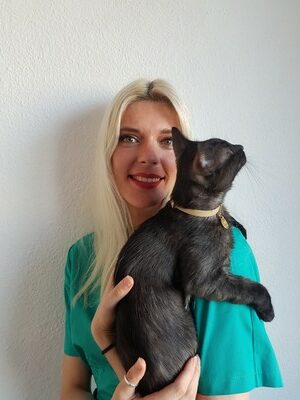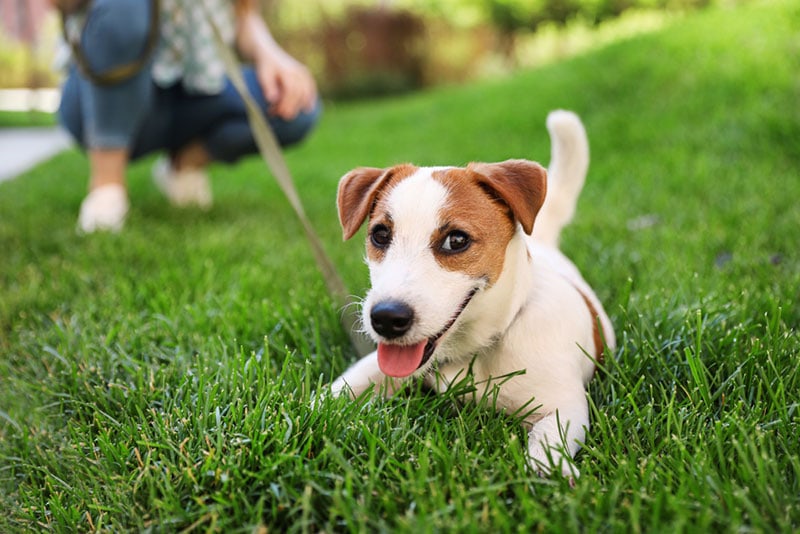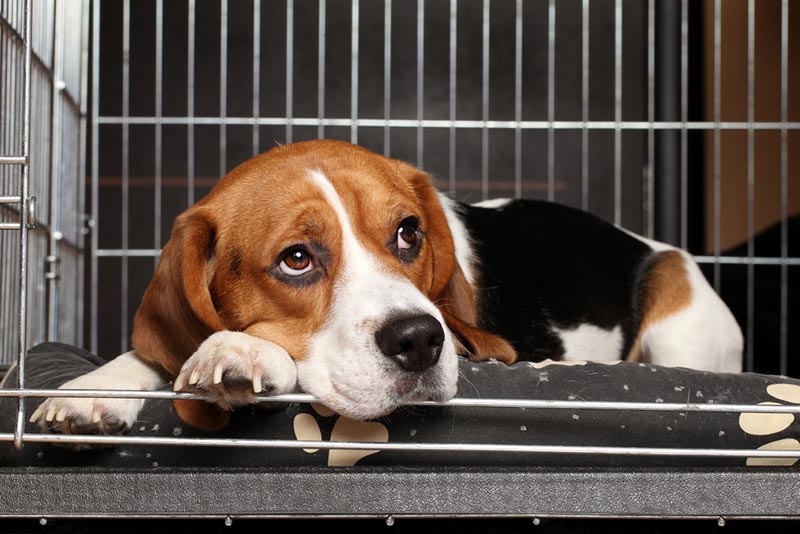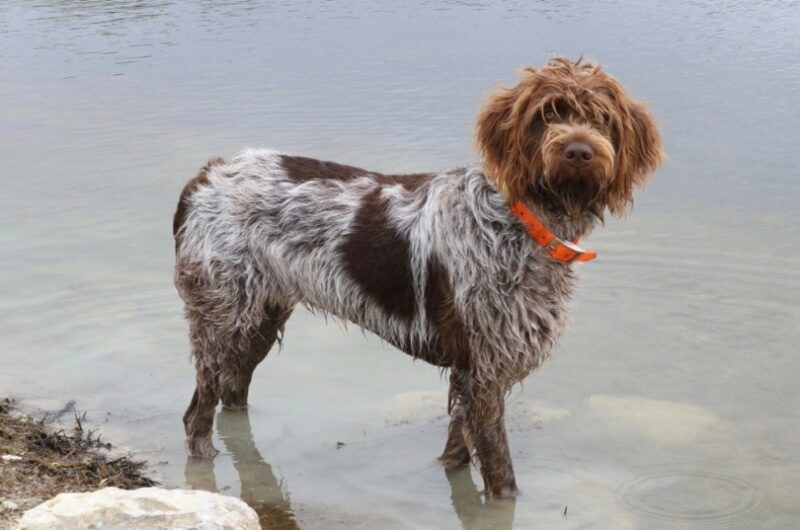Do Great Pyrenees Have a Double Dew Claw? Breed Characteristics
Updated on
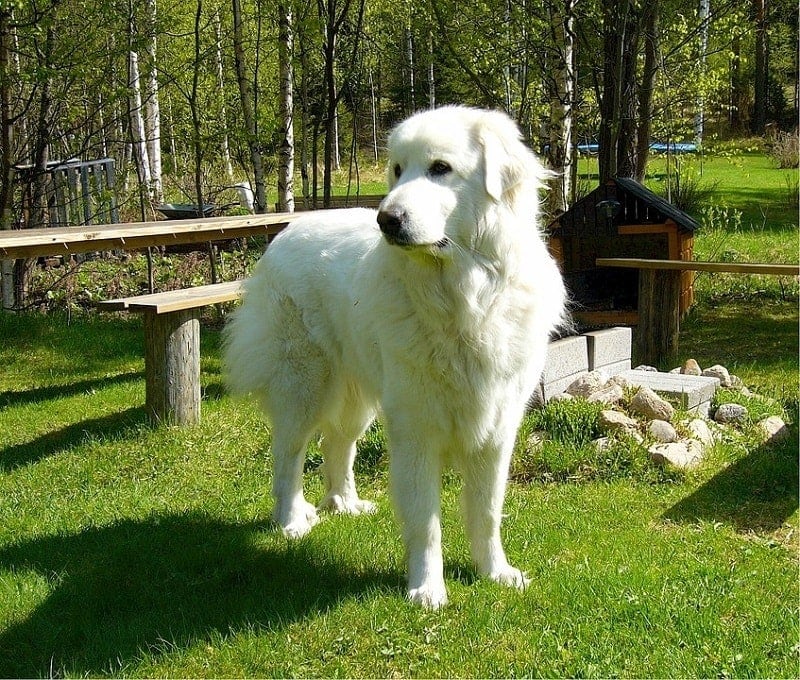
Click to Skip Ahead
The Great Pyrenees is, in all respects, an amazing breed with many remarkable traits. They are affectionate, calm, great with kids, and make extraordinary companions and family pets. However, their dewclaws are one characteristic that sets them apart from most breeds.
This unique trait has led to quite a bit of debate. Do the Great Pyrenees have a single dewclaw, or are they supposed to have a double dewclaw? Because it’s so common, the AKC standard for Great Pyrenees today is to have a double dewclaw.
To learn more about dewclaws and why the Great Pyrenees has a double dewclaw, take a look at the following info. Below, we’ll answer all your questions and provide helpful tips for taking care of your Great Pyrenees’ dewclaws!
What Are Dewclaws (and What Purpose Do They Serve)?
One of the most fascinating factors about dewclaws is that, in many ways, they’re similar to the human thumb. One similarity they don’t share, unfortunately, is that they aren’t opposable. Your great Pyrenees will not be able to, for example, grab a cup and take a drink out of it.
The dewclaw still provides an important purpose, however. It helps your Great Pyr grip and manipulate objects like toys, bones, and other objects. Their dewclaw also helps stabilize their wrist bones (aka carpal bones) when running and provides support when they turn at high speed.
In other words, with a dewclaw, a dog like the Great Pyrenees has better agility, traction, and the ability to hold onto and control objects they want to lick, bite, or chew.
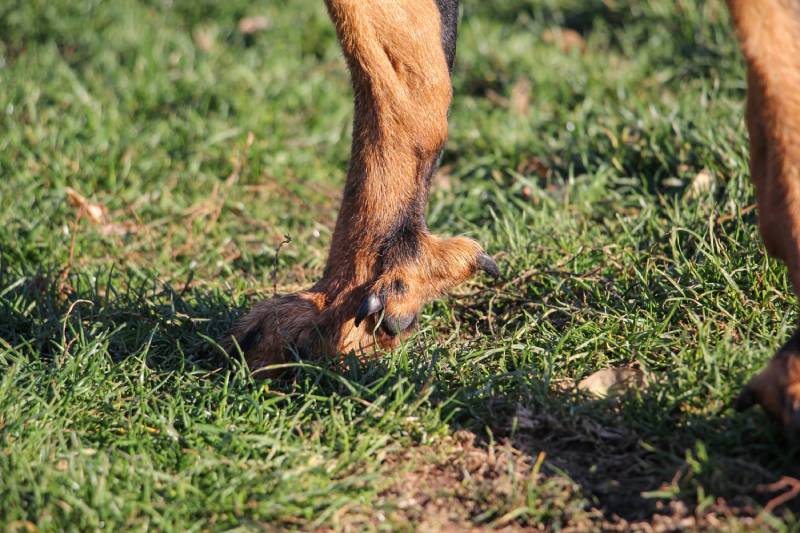
Do All Dogs Have Dewclaws?
Most breeds have front dewclaws, but only a few have rear dewclaws, including the Great Pyrenees, Icelandic Sheepdog, and St. Bernard, among only a handful of others. For some dogs, the front dewclaw is part of the breed’s standard and won’t be removed if the dog is shown or entered into competition.
Why Do Great Pyrenees Have a Double Dewclaw?
The double dewclaw, also known as polydactylism (aka multiple fingers), was an evolutionary adaptation the Great Pyrenees made thousands of years ago. A Great Pyr with bilateral double polydactyly, which means they have six digits on both paws, carries one of two copies of an ALX4 mutation. Studies have found this distinct mutation only in the Great Pyrenees.
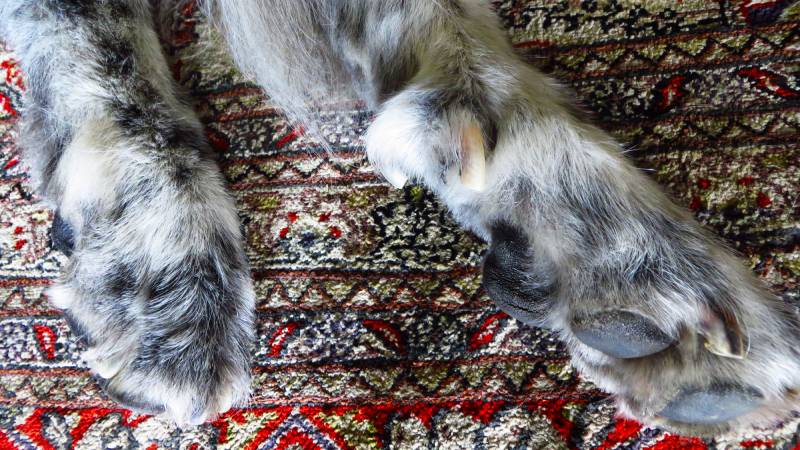
Should a Great Pyr’s Dewclaws Be Trimmed?
The dewclaws on your Great Pyrenees are no different from the other nails on their paws. They will grow as fast or slowly and wear down with frequent use. Sometimes, you won’t need to trim your dog’s dewclaws because they will wear them down enough to make it unnecessary.
However, in most cases, regular nail trimming will be needed so that your Great Pyr’s nails stay at a healthy length. All dogs are different, and yours might grow their dewclaws faster. Since an overgrown dewclaw can significantly increase the risk of snagging and injuring your dog, keeping an eye on them and trimming them when needed is highly recommended.
How Do You Trim and Clip Double Dewclaws?
Trimming the dewclaws on your Great Pyrenees isn’t much different than trimming their other nails. Depending on your dog, it might be an easy process or, if they aren’t fond of it, relatively tricky due to their great size. Some Great Pyrenees pet parents prefer to take their dogs to a professional groomer when they need their nails trimmed.
- Gather your trimming tools, including a nail trimmer and file.
- Command your dog to lie down.
- Use the nail trimmer that works best for your Pyr’s nails. That will either be a scissor-type trimmer or a “guillotine” trimmer. Most groomers use a guillotine trimmer for dewclaws because they can be bent slightly away from the rest of the paw, making them easier to trim.
- Before cutting, determine where the dewclaw’s quick is so you don’t trim your Pyr’s nails too short.
- Cut or trim your dog’s dewclaws to the correct length.
Should Double Dewclaws Be Removed from Your Great Pyrenees?
There is more than a little debate about whether to remove the dewclaws. As we’ve seen, dewclaws allow dogs like the Great Pyrenees to grip surfaces better and hold and manipulate objects.
While some veterinarians still recommend removing loosely attached double dewclaws to prevent injury, statistically speaking, the incidence or risk of injury is extremely low. This, again, puts the value of removing dewclaws up for debate.
It’s also worth noting that, while some people have their dog’s dewclaws removed, doing so will disqualify the Great Pyrenees from the show ring.
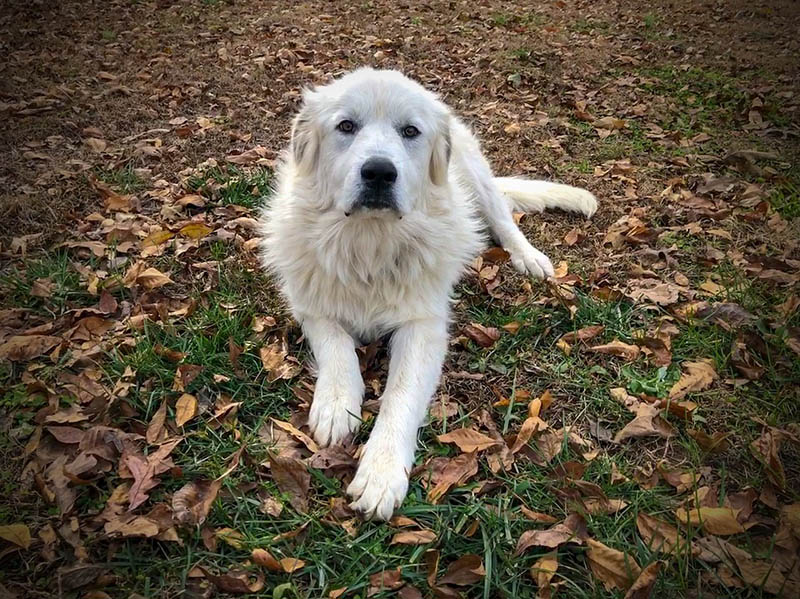
Can Removing Your Dog’s Dewclaws Cause Health Issues Later in Their Life?
One reason not to remove your Pyr’s dewclaws is that, if you do, it could cause joint problems later in life. Once the dewclaw is removed, there’s a much higher risk that the ligaments in your dog’s wrist(s) can overstretch and tear, which is a painful injury that takes a long time to heal.
Not only does removing their dewclaws cause carpal ligaments and bones to become misaligned and stretched, but it also puts more stress on the other joints in their legs, including their hips and spine.
Final Thoughts
The Great Pyrenees is one of only a handful of breeds with a double dewclaw. Although some believe they should be removed, most veterinarians say you shouldn’t remove the dewclaws since they serve a purpose.
It’s also worth noting one last time that, as far as standards go, to enter a Great Pyrenees into any dog competition in the United States, they must have double dewclaws, or they will be disqualified. Considering that removing dewclaws can increase the risk of joint problems later in life, most vets agree that leaving your Great Pyr’s dewclaws in place is the best choice.
Featured Image Credit: skeeze, Pixabay



